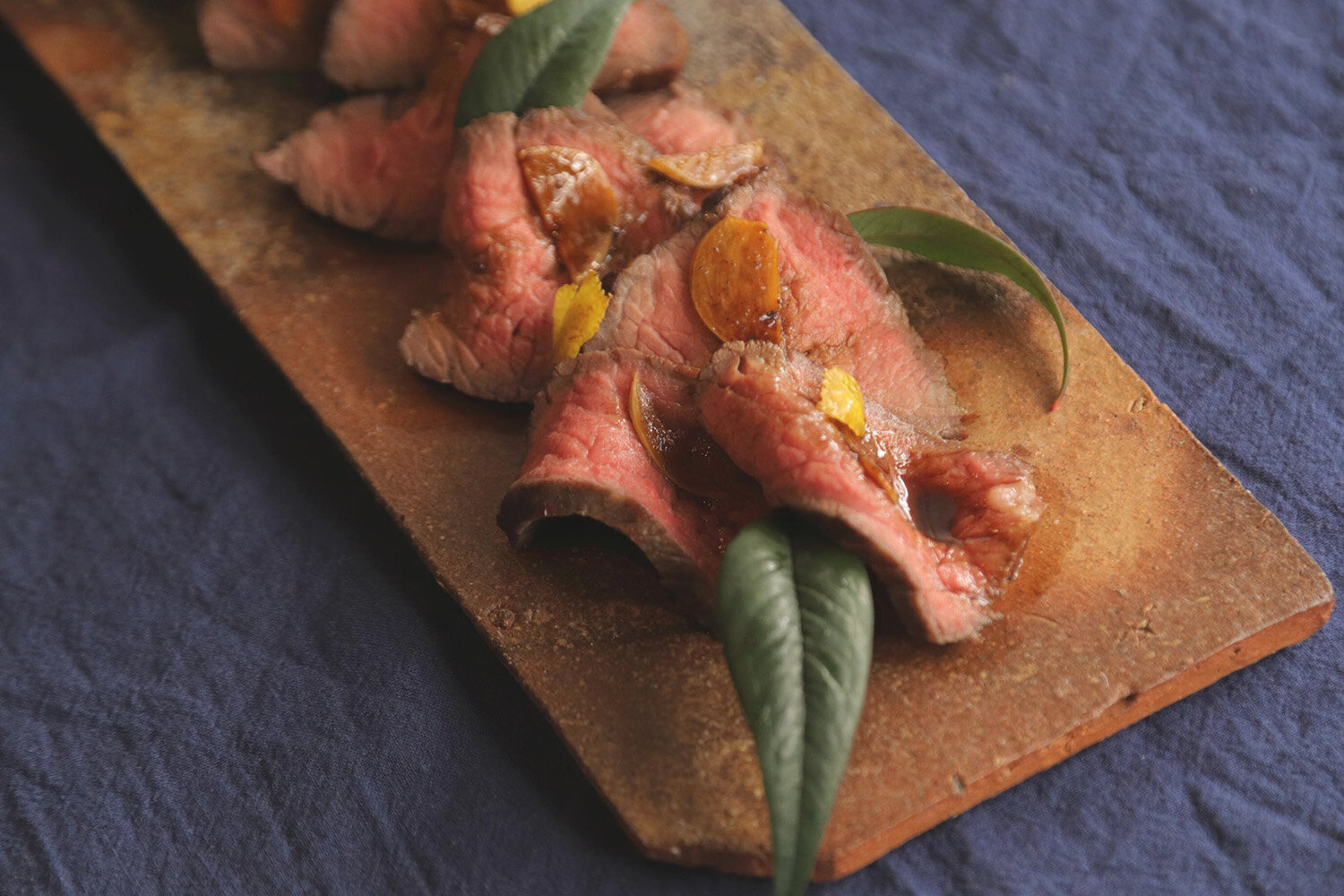
Ancient Beginnings
Over more than 1,000 years
Bizen Pottery has been shaped over more than 1,000 years. Hailing from the small village of Bizen - one of the six ancient Japanese kilns - its artists have been refining their techniques ever since. While learning from their predecessors down a long lineage of dedicated artists, many younger Bizen artists have continued to challenge and adapted their techniques and aesthetics, building on this foundation of tradition and mastery.
Tradition and modernity
Our selected artists are young and high-profile: promising artists with talented sensitivity that allows them to combine the traditional beauty of Bizen Pottery with modern influences.

Wabi-sabi, Japanese Aesthetics
A cornerstone principle of Bizen Pottery is wabi-sabi - which comes from traditional Japanese aesthetics and is focused on the celebration of beauty in imperfections and patina: in moss that grows over time, dust that gathers, blemishes that appear and make objects - and people - characterful, wise, and unique. The concept, which originally comes from a combination of the words 'solitary' and 'rustic,' is a cornerstone principle in Bizen Pottery, which celebrates the simplicity and asymmetry of nature in its individual and characterful works.

No Added Glazes or Paints
Nestled against the calm waters of the Seto Inland sea, Japan's Okayama prefecture is home to Bizen: a small village with a big reputation. It is the birthplace of a prestigious and highly valued 'art of clay and fire' that harnesses the power and serendipity of nature to create masterful artworks. Bizen Pottery is pure and simple: combining the unrivaled skill of generations of potters with the beauty and abundance of nature from the region to create unique and singular pieces, completely unadulterated, with no added glazes or paints. It is the product of tremendous skill, shaped by nature.

Artistry, Applied
Duality of artistry and functionality
Made from nothing but clay, and fired at a relatively low temperature for no less than 2 weeks, Bizen Pottery has significant functional benefits that accompany its natural beauty. It is remarkably durable. No additional paint or glaze is used, making it highly porous. Flowers and plants are said to live longer in Bizen Pottery: benefiting from water able to absorb more oxygen through the microscopic holes in the surface of the vessels. High porosity also means Bizen Pottery prevents beverages and meals from cooling down or warming up too quickly.
Michelin-star restaurants
Bizen Pottery has enjoyed much popularity throughout its history, especially in tea ceremony communities, due to its duality of artistry and functionality. With its functional beauty, Bizen Pottery is registered as a culturally-important art – or dento-kogei – by the Japanese government, and is even selected by some Michelin-star restaurants now.

Sustainability
Since nature, as the core of Bizen Pottery, shapes everything the artists create, sustainability is of great importance in Bizen Pottery. The local community works hard to preserve its bountiful forests. Artists use local materials, such as clays, water, and firewoods, for their artworks. Such effort and deep reverence for nature allows Bizen Pottery to flourish sustainably.

Heart & Hands
Destiny
It is the destiny of a Bizen artist to become one. Nearly all are born into families who carry the craft down the line. One of our selected artists, Toshiaki Mori, is the 19th generation of a renowned Bizen Pottery family. Immersed in the elements of Bizen Pottery from a young age, they handle clay with the same ease that they breathe. Despite this, only a few artists establish their own names after their apprenticeships. Some go on to study under a Living National Treasure, while others study at top art schools or refine their aesthetic sense by studying abroad. Our selected artists are the utmost examples of this journey. Steeped in the tradition and philosophy of Bizen Pottery, they are continuously challenging their aesthetic expression to realize a higher plain of beauty by leveraging their exceptional sense and skill. It is a journey they will pursue to the end.
Material
Bizen Pottery is unique in that artists harness the quality of local materials – clay, water, and firewood. Clay is the key to the beauty of Bizen Pottery. Bizen is surrounded by unspoiled mountains, which preserve intact ancient strata from more than 5,000 years ago. Hiyose is a dark organic-substance-rich clay extracted from a deep stratum under rice paddies. Bizen artists blend Hiyose with various types of Yamatsuchi: lighter-color clays extracted from the mountains. These clays are appropriate for long-term low-temperature firing, which blesses Bizen Pottery with its beauty and functionality. Another essential material is firewood. Bizen artists still use traditional firewood kilns for most of their production. Abundant in pine trees, Bizen village provides Bizen artists with the materials needed to continue ancient processes.
Crafting Process
Bizen Pottery allows its artists to express their individual selves and aesthetic values with its unique crafting processes that take even a few months for artists to complete their works.
Clay Preparation
Unlike many other ceramic arts, Bizen Pottery starts from in-depth communication with clay. After drying clays dug from the earth, Bizen artists grind, re-hydrate, and blend them, and store them to stabilize their condition. This preparation process requires a profound understanding of each clay's features, especially for the blending process, where there are infinite possible combinations. Remarkably, even with this available abundance and variety, each Bizen artist continuously seeks new types of clays and variations of blends to extend one's own imagination and expression.
Forming
After this several weeks-long preparation process, Bizen artists finally begin the forming process. They seek their own aesthetic ideals in this phase, creating that which only they can with their exceeding craftsmanship and unique sense of beauty. This phase can be known to take more than two months from conceiving a concept to fully forming it.
Firing
The final process is the firing, which animates Bizen Pottery with the power of nature. While many other styles of ceramic art have shifted to electric kilns, most Bizen artists stick to firewood kilns to truly capture nature's beauty. Natural fire creates temperature differences from time to time and from different locations inside the kiln, resulting in a tremendous array of patterns and colors that even Bizen artists cannot predict fully. With the magical power of natural fire, Bizen Pottery captures beauty and serendipity beyond human imagination. To embrace this power, Bizen artists watch over their firewood kilns during the entire duration firing process: fighting off sleep and standing the intense heat for no less than two weeks. While leveraging natural fire for most of their production, Bizen artists have recently introduced gas kilns to craft white-based pottery. With gas kilns, artists can generate beautiful white colors by keeping pottery from being exposed to smoke, a symbolic technique that enhances traditional craftsmanship via modern technology.








